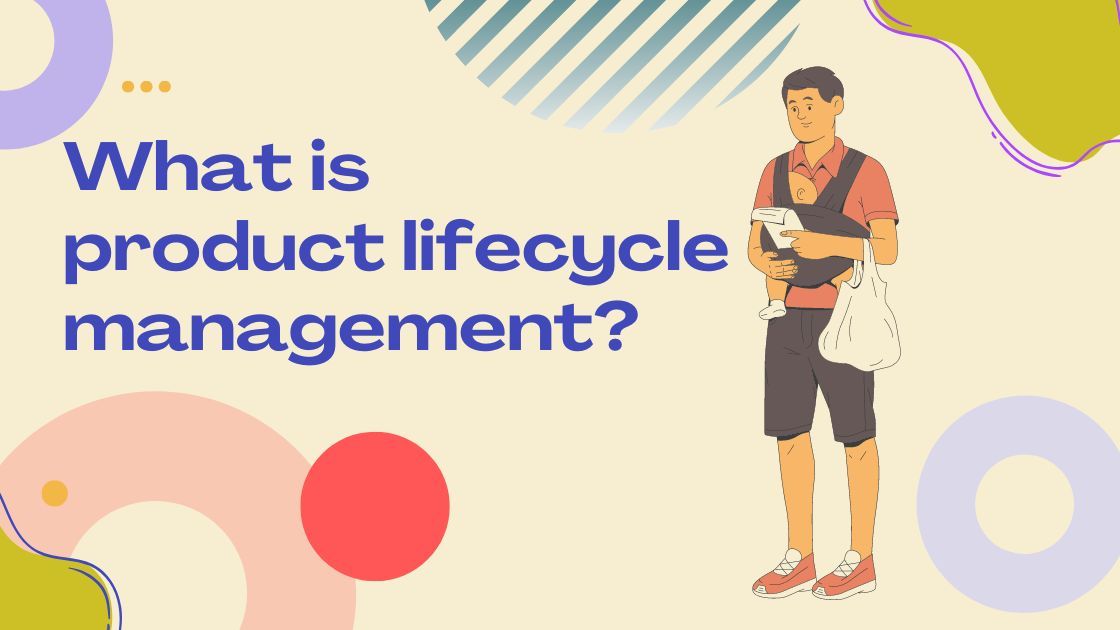Understanding PLM is essential for business management and improving efficiency. Read on to discover what product life cycle management is and why your business should make the most of product life cycle management (PLM)
The history of product life cycle management
Since the early days of industrial machinery to today’s modern PLM strategies, business managers have sought to simplify the product development process using cloud PLM. As product design and manufacturing became more complex throughout the 20th century, their life cycles became increasingly complicated.
Theodore Levitt coined the phrase “product life cycle management” in the 1960s with four basic stages. Today, you might split PLM into five, six, or even seven stages.
Product life cycle management became a recognized strategy throughout the 20th century in the American automotive industry. Cars became increasingly intricate, rising manufacturing and development processes and costs, smaller companies found it hard to stay relevant. American Motor Company (the makers of Jeep) kick-started the revolution of PLM by centralizing their data management.
From these early roots in managing product data sharing, PLM capabilities have grown to include quality management, product information, portfolio management, enterprise resources planning, and customer relationship management (CRM).
What is a PLM software system?
A PLM software solution is vital throughout the product life cycle management stages. Product life cycle management software includes a CAD (computer-aided design) data warehouse and other PLM platforms from engineering design to supply chain management.
Product life cycle management software provides all stakeholders visibility into the design, marketing, and sales processes. With greater transparency and information management, businesses can make more informed decisions.
In its earliest stages, the PLM embedded software will consider the bill of materials BOM management (bills of materials are the recipes for your product). Throughout the lifecycle, management software will help project managers, designers, and engineers optimize processes.
Examples of PLM vendors and software include document management PLM tools like Nuclino, communication apps like Spike, and client support platforms like Olark. Many choose Markup Hero to annotate images, PDFs, Google Docs, and more.

How does a PLM system work?
A PLM solution helps everyone throughout product life cycles manage the business process. It gives designers and engineers access to the necessary data in real-time. The system streamlines project management by linking CAD with a bill of materials and other data sources.
With everything in one place, everyone in the business can see the product’s digital twin quickly and easily. Designers and engineers have insights into customer expectations and feedback.
What are the five stages of the product life cycle?
The product life cycle is a series of successive management stages encompassing the entire production process. Understanding the product life cycle is essential for improving efficiency, reducing costly procedures, and ensuring better product marketing.
1. Development
The product life cycle stage involves research, brainstorming, and planning. A company will bring in investors, develop prototypes and product designs, and test effectiveness before strategizing the launch. The product developed will potentially require years of thought and expenditure without bringing in any revenue.
Some companies adopt a concurrent engineering strategy to speed up software development and production.
2. Introduction
Next, businesses must consider the introduction stage, where the product launches in the market. Marketing teams will reach out to potential customers and build product awareness on encouraging demand and sales. Taking the time to market a product carefully could make or break a business. Focus on advertising and marketing campaigns.
PLM systems can help get products to market faster.
3. Growth
Sales will gradually begin to level off in the maturity stage. Companies start reducing their prices so they can stay competitive. You will become more efficient, learning from mistakes earlier in the product life cycle. Marketing campaigns switch to a differentiation focus rather than awareness. Products meet their peak; production costs go down while sales profits go up.
4. Maturity
Once launching the product, consumers will begin to buy it. Sales and demand may be low initially but should gradually increase, meaning profits grow steadily. This stage of process management involves expansion and competitive development.
5. Saturation
Finally, the PLM process ends with product saturation. Competitors have taken a portion of the market, and the product’s life cycles will no longer grow or decline.
At this point, most consumers use the product, but other competitors continue cornering their portion of the market. You want your product portfolio to become the brand preference, so you don’t enter the decline stage.
The decline of the product’s life cycle
Technically, the decline of your product is the final stage of PLM product management. Unfortunately, your sales will decrease with heightened competition if your brand doesn’t become the preferred brand. You will typically experience a decline, which is difficult to overcome.
Trends rise and fade; a decline might not be anything to do with product quality. However, successful product management requires finding ways to adapt and develop your business strategy and product to stay relevant.
You might discontinue a particular product and pool your resources into a new product and process. You will learn best practices for managing the production process with suitable management systems.
What is the most critical stage of the product life cycle?
All stages of production and process management are vital for success. Creating an innovative product with potential is the first, and arguably the most crucial, stage of the product life cycle. If you don’t develop a good, quality product that consumers need, you won’t get very far.
However, the subsequent stages of the product life cycle could equally make or break your business. The maturity stage offers the most revenue as the costs of marketing and production decline. To get to that stage — and prolong maturity to avoid decline — you need to pay close attention to the first few stages of the product life cycle.
Examples of the product life cycle
Here are a few examples of successful products designed and managed by well-known brands.
Coca-Cola Great Britain
Coca-Cola is the world’s largest beverage company, operating in more than 200 countries. Coca-Cola is a perfect example of a company whose products have reached market saturation and maturity and maintain their position against the competition — namely, Pepsi. Coca-Cola is a fizzy drink first developed in Atlanta, Georgia, in 1886.
As of 2022, the company has a large and loyal group of followers throughout most countries but could still be in the growth stage in some areas. Despite that, it’s one of the most recognizable brands in the world with a unique logo and bottle design. They use direct and indirect marketing strategies to maintain their position as the leading cola manufacturer.
Coca-Cola in the UK has adopted a circular product life cycle management process. They fill their bottles with their drinks and deliver them to shops to sell to consumers. They implement a recycling process, so the bottles are refilled six weeks later and returned to the shelves.
Apple iPhone
The first Apple iPhone was launched in 2007. Unlike Coca-Cola, the iPhone wasn’t the first of its kind. Cell phones have existed since the early 1990s. Therefore, Apple didn’t have an automatic market corner for their new product.
In addition, the iPhone is a high-end product. Whereas prices are usually kept low during the introduction stage, Apple had some of the most expensive cell phones on the market. The price is high to attract only a premium market segment.
Apple is continually designing, developing, and launching new products. The latest iPhone in the introduction stage is the iPhone 14 Pro.
Unlike Coca-Cola, they don’t have to maintain the maturity stage for any product continually. Instead, as technology evolves, it lets older models decline while new models enter the growth and maturity stages. By effecting a successful marketing campaign, Apple has secured a loyal market. The same and new customers return to the company for the newer products, improving success over time.
We might view the PLM journey differently with Apple, as with many other companies. This graph shows the potential for product extension.
What is PLM vs. ERP?
Many businesses utilize the benefits of PLM and enterprise resource planning (ERP). While PLM helps companies manage the product development stage and process, ERP enhances inventory, logistics, and pricing management. ERP can connect supply chain management with accounting, human resource departments, and customer relationship management.
ERP is a critical component of PLM and crucial to the overall success of an organization. They are complementary systems that drive business and customer success.
Integrating PLM and ERP software is one of the essential steps for your organization. Despite often being perceived as separate and competing operations, ERP technologies should integrate with existing PLM systems to produce accurate product data.
Try Markup Hero
Ready to make amazing graphics and annotated visuals?
Start using Markup Hero to take screenshots, annotate images and PDF's and become a product life cycle management expert.
Signup For FreeWhat are the benefits of life cycle management?
There are many benefits of product life cycle management. Below are key reasons you should invest in PLM:
- Improve development, engineering efficiency, and effectiveness. PLM enables the flow of real-time data to support knowledge sharing and collaboration.
- Eliminate errors during the engineering stages. It’s a lot simpler and cheaper to rectify product issues early on. PLM allows you to reduce costs and manufacturing waste, creating a better product with fewer expenses.
- Push your product to the market more quickly. With a single source of truth, you can access real-time, relevant information throughout the product life cycle. PLM empowers project managers to control complex products and overlapping timelines and get products to market more quickly.
- Improve project delivery with a cross-enterprise digital thread for advanced workflow and document management. PLM allows teams to calculate production costs and effectively handle engineering change management. Overall, this will improve product value for the business and increase the customer lifetime value.
- Produce higher quality designs and products. PLM enables designers to access deeper insights into requirements based on market research and customer feedback. With data from internal and external sources readily available, a PLM system can transform performance.
What are the disadvantages of the product life cycle?
The main drawback of enterprise PLM is that it can be challenging to predict how long each stage will take. More developed businesses in specific industries might be able to speculate better and plan product life cycle stages.
For instance, Apple has mastered the art of releasing new iPhones as the previous one enters the decline stage. However, smaller businesses or newer products have more difficulty predicting life cycle stages.
What are the challenges in managing the product life cycle?
PLM is not without its faults. Product life cycle management can face several challenges with improper care:
- Systems, processes, and departments become disconnected.
- Poor quality data leads to worse product production.
- Frequent changes may be hard to handle.
- Separate tools may lead to increased inefficiencies.
Your organization can make the most of PLM tools with careful product data management.
Summing up
Whether you’re developing a new product or entering the maturity stage of an established product, understanding the different stages is vital for marketing, planning, and growth. Each step dictates how you inform your audience and position your brand. Like Apple, you may even pre-determine the decline stage and compete against your product.
Author bio:
Nick Brogden is the founder of Earned Media. Television presenter David “Kochie” Koch calls him a digital growth expert. Nick has lectured on SEO and content marketing at the University of Technology Sydney.
Nick is a regular contributor to Entrepreneur and Flying Solo. He is a recurring expert guest on Kochie’s Business Builders on Channel 7 network TV. Nick specializes in SEO, and he has been working in the SEO industry for over ten years.


